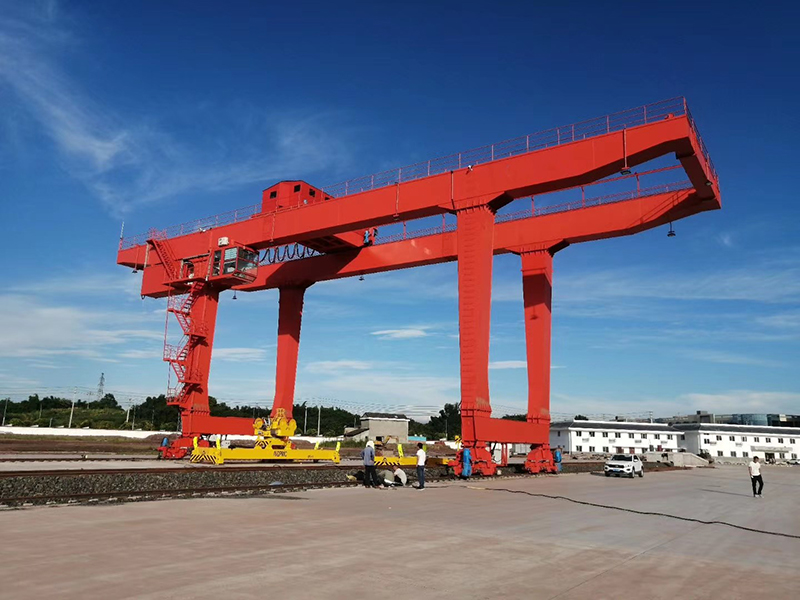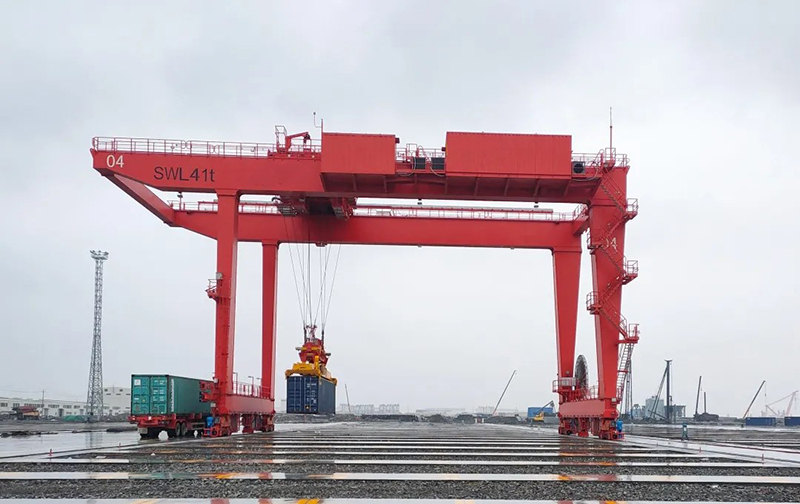Railway gantry cranes play a crucial role in the efficient and seamless operation of various industries, especially in transportation, logistics, and manufacturing. These robust machines are designed to handle heavy loads and provide essential support in material handling processes. In this article, we will delve into the primary functions of railway gantry cranes, exploring their versatility and significance in modern industrial settings.

Lifting and Transporting Heavy Loads:
One of the fundamental functions of a railway gantry crane is to lift and transport heavy loads with precision and efficiency. These cranes are equipped with powerful hoisting mechanisms that enable them to handle a wide range of weights, from moderate to extremely heavy. This capability is particularly valuable in industries where large and cumbersome materials need to be moved swiftly and safely.
Rail Integration for Seamless Movement:
Unlike traditional cranes, railway gantry cranes are uniquely designed to operate along a set of rails. The integration of a rail system enables these cranes to traverse significant distances, covering expansive work areas such as shipping yards, manufacturing plants, and storage facilities. This feature enhances the overall mobility and flexibility of the crane, making it an ideal choice for applications that require extensive coverage.
Loading and Unloading of Freight:
Railway gantry cranes are commonly employed in freight yards and intermodal terminals for loading and unloading cargo from trains. Their ability to span multiple rail tracks makes them efficient in handling containers and other goods, facilitating a smooth transition between rail and ground transportation. This function is pivotal in optimizing logistics operations, reducing turnaround times, and ensuring the timely delivery of goods.
Container Handling in Ports:
In maritime settings, railway gantry cranes are indispensable for container handling in ports. These cranes are strategically positioned along quaysides, allowing them to reach over vessels and transfer containers between ships and storage yards. Their high lifting capacities and precise control mechanisms contribute to the swift and safe movement of containers, a critical aspect of port operations for global trade.
Versatility in Material Handling:
Railway gantry cranes exhibit versatility in material handling, making them suitable for diverse industries. Whether it’s steel coils in a manufacturing facility, bulk materials in a mining operation, or heavy machinery in a construction site, these cranes can be adapted to handle a variety of loads. This adaptability enhances their value across different sectors, providing a reliable solution for various material handling challenges.

Maintenance and Repair Operations:
Beyond material transportation, railway gantry cranes are instrumental in maintenance and repair operations. Their ability to lift heavy equipment and machinery allows for efficient maintenance tasks, minimizing downtime in industrial facilities. Whether replacing components, conducting inspections, or making repairs at elevated heights, these cranes contribute to the overall reliability and longevity of critical infrastructure.
Integration with Automated Systems:
In the era of Industry 4.0, railway gantry cranes are increasingly integrated with automated systems. This integration enhances their efficiency and precision in material handling processes. Automated container gantry cranes can be programmed to follow predefined paths, optimize load distribution, and interface with other automated equipment, reducing the need for constant manual intervention and improving overall workflow.
Safety Features for Accident Prevention:
Safety is a paramount consideration in industrial operations, and railway gantry cranes are equipped with a range of safety features to prevent accidents. These may include overload protection systems, anti-sway technology, collision avoidance mechanisms, and emergency braking systems. These features not only protect the equipment and the materials being handled but also ensure the safety of workers and the surrounding environment.
Conclusion:
Railway gantry cranes are indispensable assets in modern industrial landscapes, contributing significantly to the efficiency and safety of material handling processes. Their primary functions encompass lifting and transporting heavy loads, seamlessly traversing rail systems, loading and unloading freight, handling containers in ports, adapting to various material types, supporting maintenance operations, integrating with automated systems, and incorporating safety features.
As industries continue to evolve, the role of railway gantry cranes is likely to expand, driven by advancements in technology and the increasing demand for streamlined and automated material handling solutions. These versatile cranes stand as stalwarts in the realm of heavy-duty lifting, playing a vital role in the movement of goods and materials that underpin global commerce. For more info, click here https://steelmillcranes.com/